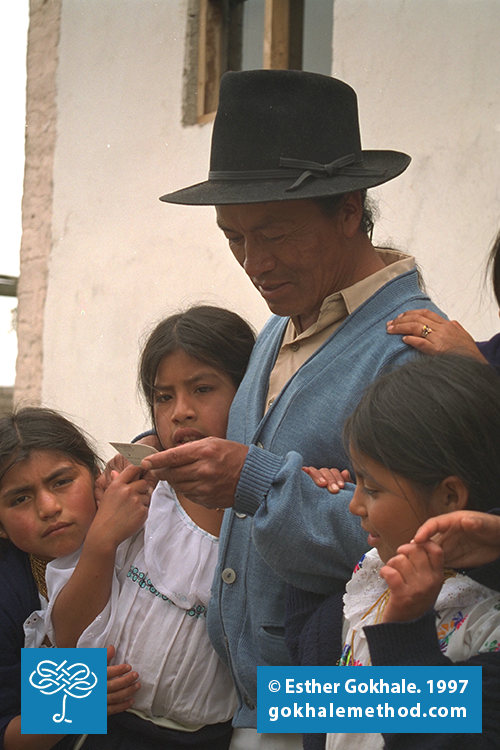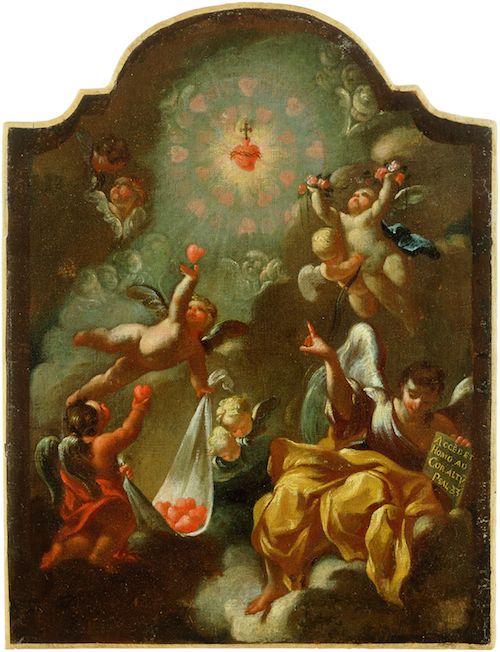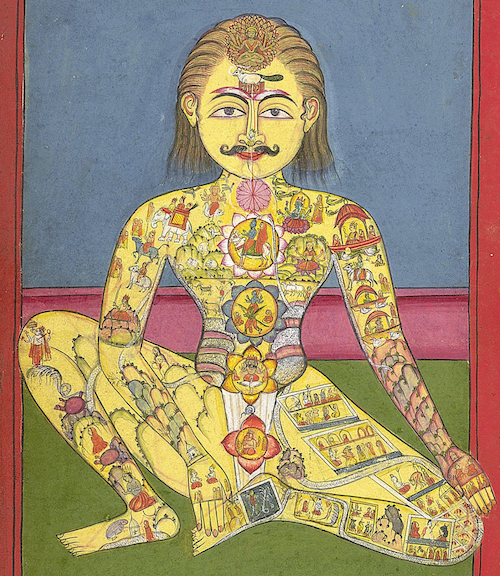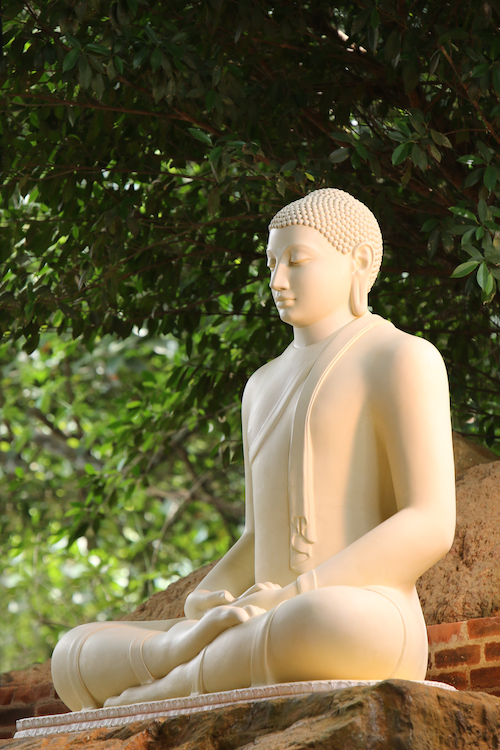Opening Your Heart Space

This bronze figure shows an open chest and “heart space;” his shoulders are well back and his ribcage is anchored. He is part of a fountain in Piccadilly Circus, London, sculpted by Sir Alfred Gilbert in 1893. Referred to (erroneously) as “Eros,” the figure is in fact Anteros, Eros’ brother, who represents a more mature, less capricious love. Original image courtesy Gareth Williams under CC BY 2.0.
“Heart space” is a term used in yoga to describe the upper part of the chest where the heart is located. Valentine’s Day is an ideal time to give some special attention to this region, and explore its relation to your posture and wellbeing.
The Gokhale Method teaches four particular techniques which enable you to open your chest without doing damage to your back:
- Rib anchor video
Learning to engage your rib anchor is an important first step. It will prevent your lower ribs from popping up and your back from swaying in the techniques that follow.
- Up and back with the neck video
By drawing the base of the skull gently backwards and upwards, the chest is no longer crowded into the body, but rather allowed to expand outwards and upwards.
Shoulder rolls video
Shoulder rolls help position the arms further back along the torso, which immediately opens the chest to expansion with breathing. In the long run, this results in a larger, more open chest.

This Ecuadorian school teacher is much loved by his pupils. Note that the teacher and his pupils have open chests and posterior shoulder placement.
Breathing into the upper chest
The first three techniques may already leave you feeling more open-hearted. They enable you to breathe more deeply, but this may not yet be your habit. Take a few slow, deep breaths that further open your upper chest. Then rest a few breaths before repeating. It is common to feel resistance in the chest at first, but by using these techniques to open your structure and deepen your breathing, with practice it will become easy and pleasurable.
The functioning of the heart is clearly essential to good health and life itself, but the organ and its position in the chest are also given special importance in many religious and cultural frameworks. Even our language is full of familiar, evocative idioms such as “from the bottom of my heart,” “faint-hearted,” “heart of the matter,” “heart and soul,” “heartening,” and so on. Let’s explore the symbolism and associations a little further, especially where they intersect with posture.
Heart symbolism in Western European cultures
Let’s begin with St. Valentine. According to most popular accounts, Saint Valentine was either a priest or a bishop in the times of the Roman Empire, who, with great bravery and compassion, ministered to persecuted Christians. He was martyred and buried north of Rome on February 14, which has been observed as St. Valentine's Day since 496 AD. Another plausible legend suggests that when Roman Emperor Claudius II outlawed marriage for young men – reasoning that single men made better soldiers than those with wives and families – Valentine defied Claudius and continued to perform marriages for young lovers in secret.
Whichever legend has truth, love, bravery, and compassion are all qualities said to reside in the heart in many Western European cultures. In Catholic Christianity, the Sacred Heart of Jesus symbolises his unconditional love, and the church and its patrons commissioned many paintings on this theme. These paintings show the heart radiating divinity; they often also show the very visceral detail of an attached aorta!

Allegorical painting of the Sacred Heart of Jesus. The central heart radiates hearts gathered up by putti (cherubs). Painting by Robert la Longe, ca. 1705. Public domain, via Wikimedia Commons.
The heart-shaped symbol ♡ evolved around the 14th century, loosely based on the organ’s shape. Today we have numerous emojis preprogrammed in our smartphones, ready to use as shorthand for love, broken-heartedness, and associated feelings and events.
Heart symbolism in South Asian and East Asian cultures
Many Asian cultures also identify the heart space as essential to our wellbeing. Traditional Indian medicine describes energy centers, or chakras, that lie along the central axis of the body. The heart chakra (Anahata) is considered the center of love and compassion that can become blocked by grief or selfishness. An unblocked anahata is associated with loving-kindness and peacefulness. Tibetan Buddhist understandings of chakras also typically include a chakra located in the center of the chest.

This illustration from an 1899 Tibetan manuscript shows the body’s energy centers (chakras), including the twelve-petalled heart chakra. Public domain. Original image courtesy Wikimedia Commons.
In Japanese language and culture, the word kokoro (distinct from the physical organ) encapsulates heart, spirit, mind, and soul, among other concepts. And in Chinese medicine, the Mu, or front correspondence point, of the heart is located at the midpoint of the nipples, and is used to heal emotional hurt.

This Buddha figure in Sri Lanka displays a beautifully relaxed, open chest and heart space. Original image courtesy Sadaham Yathra on Pexels.
Posture and the heart space
Of course, with its emphasis on our structure, it is natural to think of healthy posture and the Gokhale Method as primarily benefiting our bodies. It is certainly true that having a well-developed ribcage and open chest are important ingredients for a straight spine and well-positioned shoulders. Such good structure also benefits physiological functions such as blood circulation, breathing, digestion, and allows space for the brachial nerve plexus. However, our structure is also intimately connected to our body language, revealing and communicating how we feel.

An open heart space can often look like balanced, approachable confidence. Original image courtesy nappy on Pexels.
A mounting body of research connects open upper body posture with confidence and vitality; and crumpled upper body posture with depression, exhaustion, shame, and poor health. According to a 2017 New Zealand study, it is more challenging to be depressed with open upper body posture than with slumped upper body posture. According to another, even our performance in subjects like math improves when we adopt an open posture.

These subway commuters, with their varied seated and standing postures, demonstrate a wide range of heart space openness. Original image courtesy Laura Dewilde on Unsplash.
It strikes me that there is much cross-cultural convergence on associating this area of the body with “matters of the heart.” How does your experience and knowledge of other cultures stack up with this?

Comments
I have been stuiyng the
I have been stuiyng the sequencing of muscles of the posture reflexes for 25 years. In cases of lower rib anterior protrusion starts with a sequence of Seratus posterior inferior bracing against the contraction of the diaphragm to do an abdominal expansion. Using the hands to restrict that anterior expansion tends to recruit the seratus posterior superior which originates on the lower thoracic spine and expands the center of the ribs. The improved movment of the mid ribs facilitates the strength of the lower trapezius which holds the scapula in place and balance the length of the rhomboids enabling the seratus anterior which originates on the medial border of the scapula to further expand the anterior of the ribs. The strengthened position of the scapula also gives the levator scapula a foundation to assist in holding the head back by being a cervical extender instead of shoulderblade lifter which is the translatioon of its name. Now the cervical muscle can make an expansion of the top ribs. but it does not stop there the activation of the lower trapezius also gives a foundation for the infraspinatus of the shoulder blade to externally rotate the arm countering the internal rotation dominance of the subscapularis which is anchored at the upper spinous processes. freeing even more movement of the upper front ribs by the pectoral muscles.
The bottom line is the order of corrective steps you outlined is very good.
Thank you so much for taking
Thank you so much for taking the time to share your expertise, Hans, this is fascinating. I'm familiar with most of the muscles you refer to, but I will be getting my anatomy books out to follow through with understanding the detail of their actions as you describe them. Good to hear that they accord with the very practical Gokhale Method techniques covered in the article.
Add New Comment
Login to add commment
Login